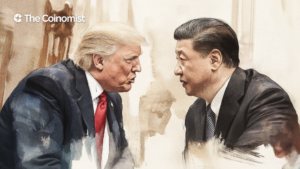Trump Administration to Launch Fed Chair Search in Fall 2025

The effort to replace Jerome Powell kicking off this fall—a potential pivot in the Federal Reserve’s future, and in U.S. monetary policy.
On this page
Treasury Secretary Scott Bessent has announced that the interview process for selecting the next head of the Federal Reserve will commence in fall 2025. Conversations around the transition have been unfolding behind closed doors for months. According to Bessent, the administration seeks a steady hand—someone capable of guiding the nation through the next phase of economic evolution.
Jerome Powell’s leadership at the Fed officially concludes in May 2026, but talk of change is already in motion.
Replacing him is more than a personnel shift—it signals a broader policy redirection. Throughout his term, Powell took a measured approach on core issues:
- Inflation dynamics;
- Rate-setting prudence;
- Financial market fragility.
In today’s fractured global economy, officials hint at deeper institutional reforms. At the forefront is a proposal to refine the balance of power between the Fed and other regulators—a shift Treasury Secretary Bessent has been openly advocating.
The Fed is one of three bank regulators—the other two being the Comptroller of the Currency and the FDIC. It’s possible to separate monetary policy from regulatory policy,
Bessent remarked.
Handled with precision, the Fed’s leadership change could mark the beginning of a more agile monetary framework. The ripple effects would reach deep into the bond market and the core interest rate that anchors not only Wall Street but also the digital economy. In a world of rapid shifts, the strength of the U.S. economy—domestically and abroad—may hinge on such structural recalibration.
Foreign Demand for U.S. Treasuries Holds Firm
Treasury Secretary Scott Bessent rejected claims that foreign states and corporations are driving a sell-off in U.S. government bonds. He emphasized a rising demand for long-term debt instruments, suggesting strong international confidence in the American bond market and characterizing the trend as part of a healthy market adjustment phase.
Check this out: Will the Fed Cut Rates in May? Falling Inflation Meets Rising Market Tensions
U.S. Treasury Secretary Scott Bessent explained the recent downturn in bond prices as a result of large market players paring down their debt—not due to a large-scale pullback by foreign investors. To manage risk and prevent further volatility, the Treasury is now evaluating a bond buyback program aimed at retiring older Treasury issuances.

To dull the sting of short-lived shocks, policymakers are directing liquidity toward the market’s quieter corners—those overlooked securities most prone to stress. Bessent offered reassurance: should conditions demand it, the Trump administration will not hesitate to leverage its full spectrum of economic instruments to preserve stability and long-term confidence.
Here’s a twist in the tale of modern finance: among the top holders of U.S. Treasury bonds—alongside global governments—stands Tether, the crypto powerhouse behind the USDT stablecoin.
Beyond internal reforms, Washington is preparing to ramp up tariff talks with its top trade allies. Officials frame the move as a step toward forging more equitable and strategic trade deals—aimed at reinforcing the U.S.’s influence in an increasingly fragmented global market.
The content on The Coinomist is for informational purposes only and should not be interpreted as financial advice. While we strive to provide accurate and up-to-date information, we do not guarantee the accuracy, completeness, or reliability of any content. Neither we accept liability for any errors or omissions in the information provided or for any financial losses incurred as a result of relying on this information. Actions based on this content are at your own risk. Always do your own research and consult a professional. See our Terms, Privacy Policy, and Disclaimers for more details.

























